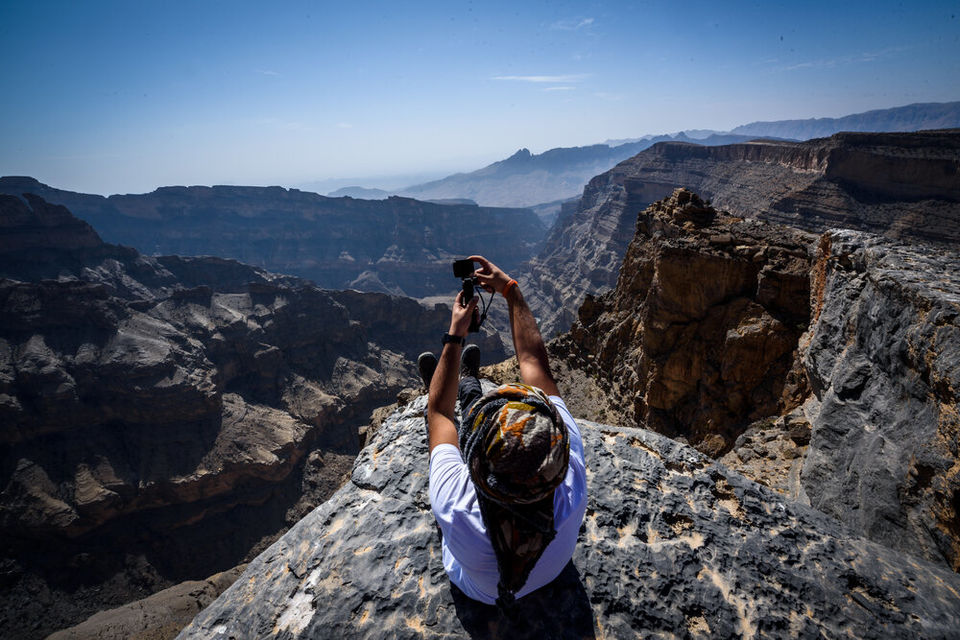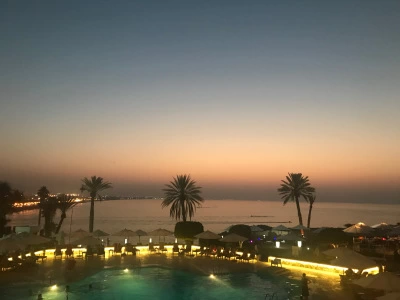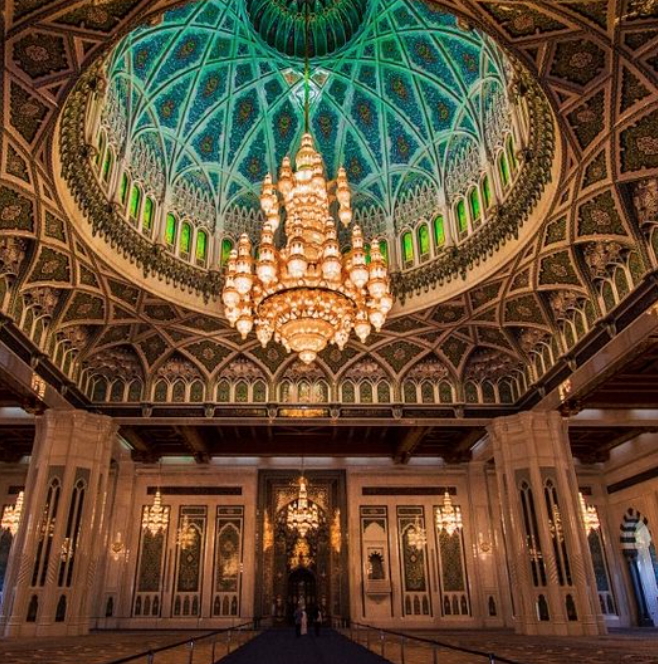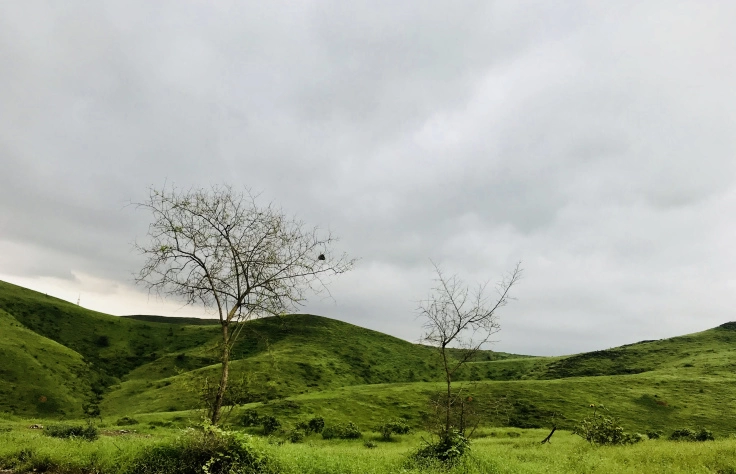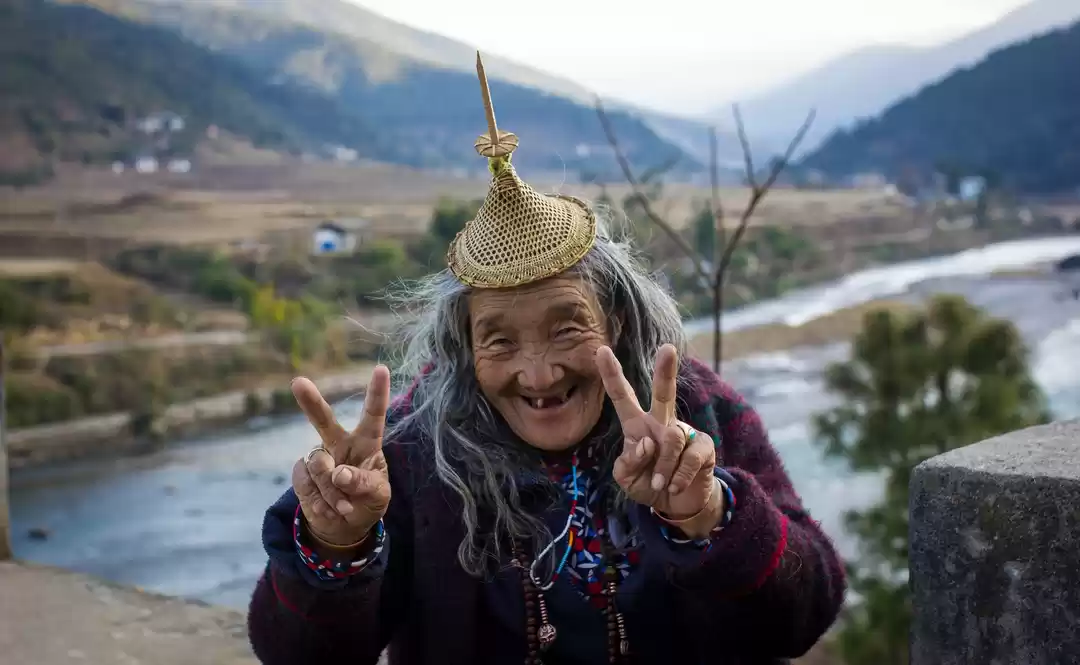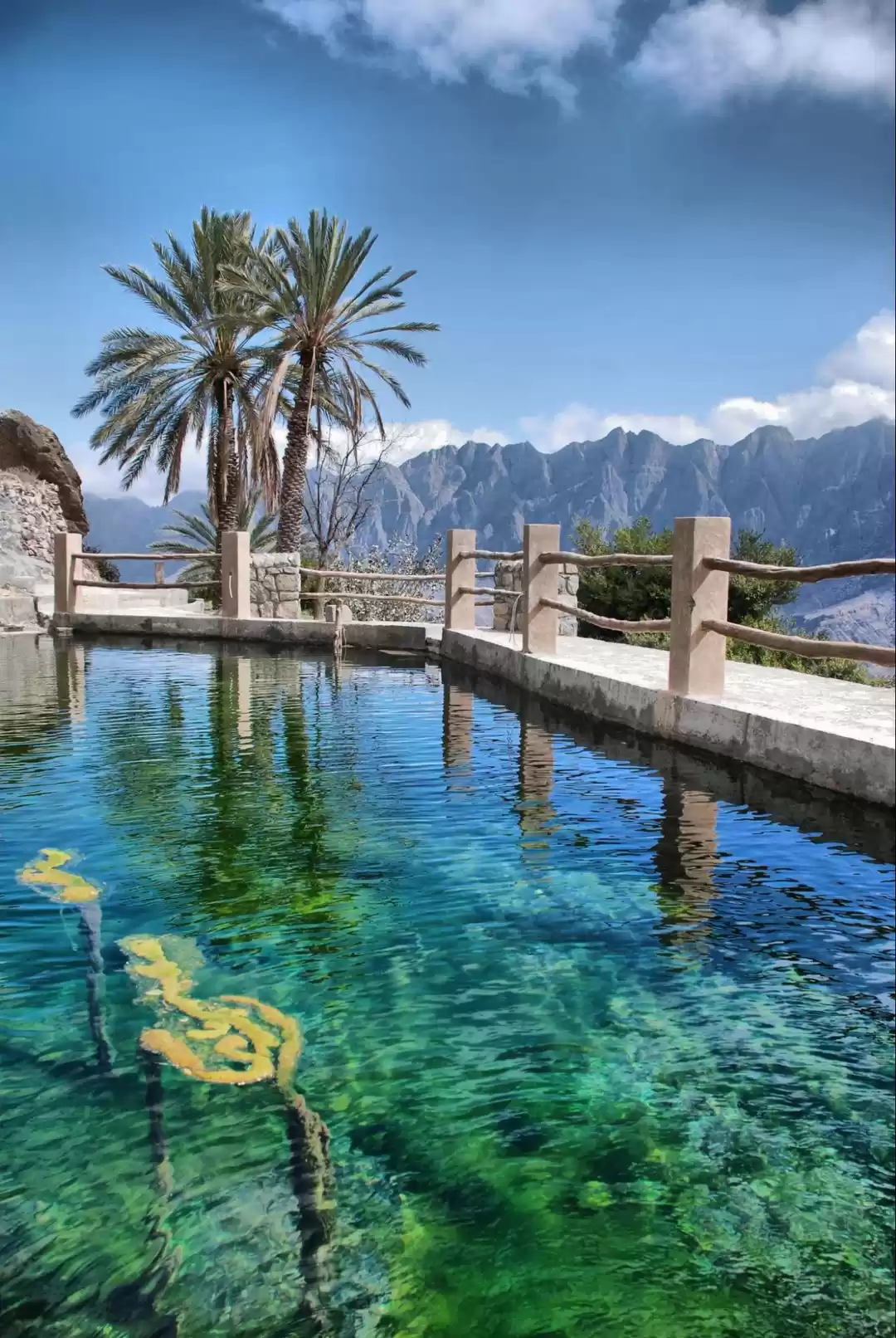People in Oman love to correct you when you predict the weather. They do so with a certain air of grim triumph, as if to remind you that your upbeat American optimism is useless in this situation. If you say, "It's a beautiful day," Noman, the guide who will lead you deep into the Wahiba Sands, a nearly 5,000 square mile desert that borders Yemen, where you'll spend the night in a goat-hair tent, might overhear you. Silence will reign. Then, as he surveys the sky, which is a vivid, cartoonish blue and against which a few cumulus clouds are pinned, fat and immobile, Noman might ominously reply, "Very windy." What a bummer, you'll think as you recline in your chair. Noman is speaking without knowledge of the subject.

You'll be inside the goat-hair tent after two hours. Within ten minutes, everything will appear to be covered in ash due to the wind's extreme ferocity and relentlessness. Your freshly squeezed pomegranate juice, hair, and eyes will all be film-covered in white, sugar-fine sand. “Very windy!” Noman will yell over the gales, and you will nod dejectedly.
The first thing that proved me wrong about Oman was the weather. The second was the scenery. The Middle East, I thought. Desert, therefore. Hot and dry Oman is also mountainous, coastal, and even pastoral, despite the fact that it is partially desert (and hot in some places). Additionally, the climate is unstable: In the course of one day, temperatures fluctuate greatly. Sandstorms seem to appear out of nowhere, and they end as suddenly as they started. It will pour heavily for an hour in Muscat, the capital, before abruptly turning sunny and clear. The weather made me think of being around a young child: There were rough patches, but they quickly passed, making it difficult to harbor resentment.
People typically respond in one of two ways when you tell them you're traveling to Oman. One is confusion: “Where?” The other is disbelief: “Why?” Oman isn't exactly a popular travel destination for Americans because of its location between Yemen to the south, Saudi Arabia and the United Arab Emirates to the west, and Iran to the north, just across the water. However, in spite of its neighbors, the country, which is roughly the size of Italy and has a population of less than five million, is a revelation: a safe, secure patch of the Middle East that serves as both a counterbalance to the glittering artifice of Dubai (the only location in the region where Americans travel in significant numbers) and a collection of astounding topographies, each more impressive than the last. It is also very optimistic about its future; the country wants to attract not only Europeans and Gulf States citizens, who already travel there in significant numbers, but also Americans, who find the idea of spending their two weeks of vacation in a region they only associate with conflict and terror difficult to sell.

However, the nation is not only a geographical but also a geopolitical oasis: Oman was instrumental in securing the release of the three American hikers who were imprisoned in Iran in 2009, acting as a mediator in the most recent round of nuclear negotiations between Iran and the United States. It is important to keep in mind that when we start judging places solely on the basis of their neighbors, we frequently miss seeing something wonderful in exchange. A country's relative friendliness toward the United States does not necessarily make it any more inherently desirable as a vacation destination.

Everyone's journey to Oman begins in Muscat, a low-slung, unassuming, dun-colored town that appears more like a suburb than the nation's capital. The Sultan Qaboos Grand Mosque, Muscat's main draw, is worth visiting primarily because it is home to the second-largest carpet in the world (45,208 square feet), as well as the second-largest chandelier in the world (46 feet high). The mosque is less ostentatious than it might be in spite of these extravagances and the vast expanses of sparkling white marble; everywhere you turn, you'll see stunningly carved wooden panels and intricate stained glass windows, but this is a real place of worship, not a fantasy. The atmosphere is festive, even joyful, though: Aside from the groups of Western tourists, the rest of the tourists are from other countries in the Gulf: Indians, Saudis, Qataris, and Pakistanis. They are all holding selfie sticks and wearing thobes, while the women are covered in the hijab. The indulgent Omani guards observe. Like the rest of the nation, the people appear unruffled, and the atmosphere is more laid-back than you might anticipate.

The mosque, which was finished in 2001, is named after Qaboos bin Said al Said, the Sultan of Oman, who has ruled for 75 years after ousting his father in 1970. He is credited with bringing the state into the modern era, judiciously participating in international affairs (Qaboos has managed to maintain cordial relations with both the United States and Iran), and driving the nation's current tourism initiative. Oman's oil reserves are finite, unlike those of many of its neighbors, making tourism not just an intriguing experiment but also essential.

Qaboos is beloved here. My normally quiet driver said, "The Sultan, bless him," as we started the two-hour trip from Muscat to my next location, Jabal Akhdar, some of the highest and most stunning mountains in the nation. He is a wonderful man. Tradition and the law both played a role in this, as it is against the law to criticize the Sultan. It also made me think of the kind of hero worship that, for example, Singaporeans have for Lee Kuan Yew, their late former prime minister. Lee, who passed away last year, transformed his city-state, which had limited resources and little land, into a prosperous and self-sufficient society, much like Qaboos. But unlike Lee, who had one of his sons succeed him, Qaboos has no obvious heir, which worries people: Who will continue the work of the Sultan?
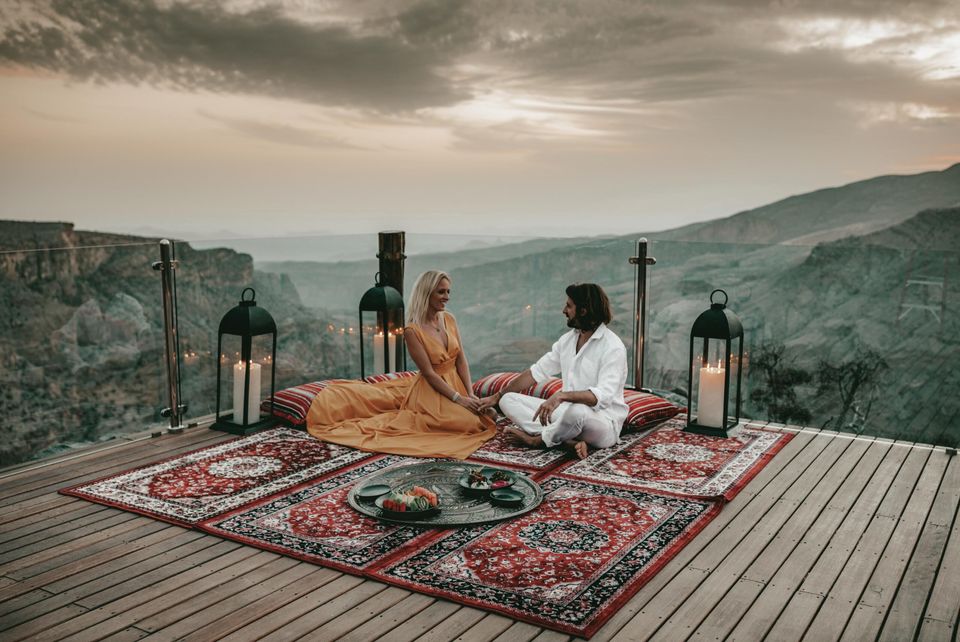


We can only hope that whoever succeeds him/her will be as diligent in guarding the land as this ruler has been. Jabal Akhdar is one of three luxury hotels that are currently open or under construction in the region. It is a part of the 186-mile-long Al Hajar Range and is scarred by incredibly deep gullies. From my hotel, the Alila Jabal Akhdar, it appears as though the Grand Canyon and the Rockies have been Photo shopped into one extravagant image.

The mountains have long provided relief to the people of Oman during the summer, when the heat in the lowlands becomes intolerable. There, the air is crisp and clean, the nights are pitch-black, the stars are bright and winking, and the land is covered in dusty green olive trees. (When I visited in the spring, the hotel was mostly filled with British expats living in the area who were on vacation during break.)
However, the region is best known for producing roses, from which the nation's rosewater, which is used in cooking, healing, and religious rituals, is made. Although I'm a month too early to see the rose harvest, which typically starts in April, the following day a guide and I drive deep into the mountains to start a walk through some of the terraced steps that transform the hillside into a series of orderly, cascading pleats.
The rose bushes are still barren, but the apricot trees are beginning to bud, and sun-drunk bees lazily hover around their clusters of white blossoms. After an hour of walking, my guide hikes back up the narrow, perilous path he had carved out of the mountainside to retrieve the car, while I continue on a narrow dirt path that meanders through a collection of farms that are too few and too small to truly constitute a village and will eventually bring us together. I have to pay attention to where I step because the mountain is so steep; the ground is dry and crumbly beneath me, and with each step I take, I feel myself sliding a few inches downward. I eventually stop. A few tendrils of white smoke that are rising from hidden chimneys are the only things that the clear, brilliant blue sky above me is broken by. The last of the pomegranate trees' mummifying fruit is on their branches, and almond trees blowy with pale-pink flowers are all around me. There is utter silence. I wait in the heat and have one of those rare, priceless moments—the kind where you're not sure where you are or even when you are, when the world of skyscrapers and war seems like an abstraction or a dream, and all that's real is what's in front of you—the good, clean smell of bark and hot soil.
It would be naive and too clichéd to claim that the geopolitical landscape of the modern era, let alone Oman's own localized problems—an uncertain future, complaints about excessive bureaucracy, and a widening gap between the wealthy and the poor—seemed more theoretical than real at that moment, things that were incidental to such beauty and easy to forget. But it would also be true. It seemed necessary there, among the orchards of blossoming trees, that this should be a place worth visiting—a dream of peace in a place that has never been praised for it.

Even though the Omani mountains are unexpected, I'm actually in this location to see the desert, which is what I expected to see. The following day, I am picked up by the aforementioned Noman and driven two more hours south, into the country's northeastern Wahiba Sands, where I spend the night in a tent reserved by Hud Hud, a deluxe mobile camp provider who organizes private stays throughout the nation.
I can tell you that the majority of us associate Oman with this region, which lessens how majestic and otherworldly the experience of seeing it for the first time is. The startling aspect is how suddenly the landscape appears. You're driving through scrubland one moment, and then all of a sudden the dusty dirt road changes into something else entirely. In their place, swooping parabolas of apricot-colored sand have a boldly feminine shape. Suddenly, the neat Bedouin camps that mark the edge of the desert are gone, their striped blanket walls flapping sharply in the wind. The complete silence and the sporadic camels that you pass that are either sleeping or folded into cat-like crouching positions while staring into nothingness add to the confusion. In fact, the desert's eerie silence is its most imposing and occasionally unsettling feature. At night, when the wind has died down, it seems to scream—an absence of sound transformed into a presence.

Breakfast at Hud Hud's desert campsite
However, it is still possible to misjudge Oman in this situation. You are mistaken when you assume that Oman's politics and climate are monolithic, just as you are when you mistake the desert's sinuousness and the absence of anything sharp or hard-edged for placidity. Because, of all the landscapes found here, this is the least friendly, the most ferocious: Although the sand has been wafting softly and romantically, as soon as we enter it quickly turns into a blizzard-like storm that makes it impossible for us to move. I am left with no choice but to sit in my tent, a scarf covering my eyes and head, trying to read with a flashlight as sand fills my book. It is the most extreme weather I have ever experienced; unlike snow, it cannot be avoided, and unlike rain, it cannot be controlled. As a result, I have a newfound respect for the people who live in this region because they are constantly reminded of both the whims of nature and their own helplessness in the face of it. Being here daily encourages both humility and a spirit of resignation. “When is it going to be over?” Noman shrugs when I shout to him over the wind. “At nightfall,” he guesses. “Inshallah.”
And then, just as I start to accept the fact that the sandstorm won't stop, it does. The staff quickly get to work clearing the sand from my bed, tightening the long metal pins holding my tent walls together, lighting the numerous votives crammed onto the low table in the living room tent, filling my tin can shower with hot water, and serving me dish after dish of straightforward but delectable regional meze, including stewed eggplant, chunky, grainy hummus, and tiny falafel the size of grapes. I later wonder if I dreamed the entire incident—if, in the end, it was all a mirage, a hallucination of the desert rather than the real thing—when I go to bed in my now miraculously sandless bed, my tent hung with glowing solar lamps, the air outside cool and clear, and so still that I can see, very far in the distance, smudges of camels making their way back to their feeding posts for the night.

Scuba divers are drawn to the coves along Zighy Bay's coastline.
But the thing about Oman is that you just never know. I finally arrive at the Six Senses Zighy Bay resort two days later. If you imagine Oman as a gourd with a small cap on top, then I am situated close to the northernmost point of the Musandam Peninsula, in the cap of Oman. Like the others, this landscape is dramatic, with a series of folding cliffs that descend to a white sand beach and water that is the kind of blue that is usually reserved for children's drawings of the ocean. In the mornings, I eat eggs scrambled with onions and cilantro; in the afternoon, I eat fresh dates; and in the evening, I have whatever the local catch is, grilled and served with cucumbers. I take a swim in the ocean in between (I have the waters to myself; the other guests, mostly British couples and families from the Gulf States, stay in their personal plunge pools), and as I float on my back, I rethink my initial question from the desert: Is it a mirage or not? Hallucination or reality?
It’s real, of course. Which contributes to why everything is so exciting. On my final night at the resort, I am taken on a sunset cruise aboard a refurbished dhow, an old sailing ship. We are in the Persian Gulf, where it is illegal to serve alcohol, so we have sparkling date juice instead of champagne. As we cruise through the deep-blue waters, we pass a dozen fishing boats that are returning to port for the day. The people on board wave and smile at us as we pass.
Then one of the stewards calls out to me while pointing at something in the distance. He says, "Iran," and I turn to look. And there it is: a haze of sand color on the horizon, close enough that I believe I can make out the hazy shapes of some buildings. I've always wanted to visit this location, but for the majority of my life, it has only ever been a dream. However, here I am, nearly there, peering at its shore from a location I also never imagined I would see. And isn't that really what travel is all about? As long as you give the location, wherever it may be, the chance to cast its spell on you, you will have the opportunity to consider what you want to see in comparison to what you actually see and to reevaluate what you previously believed to be true. Oman gave me both. I wasn't prepared for it. Even though there was a sandstorm, I kept my eyes open, and in the end, I was able to see.
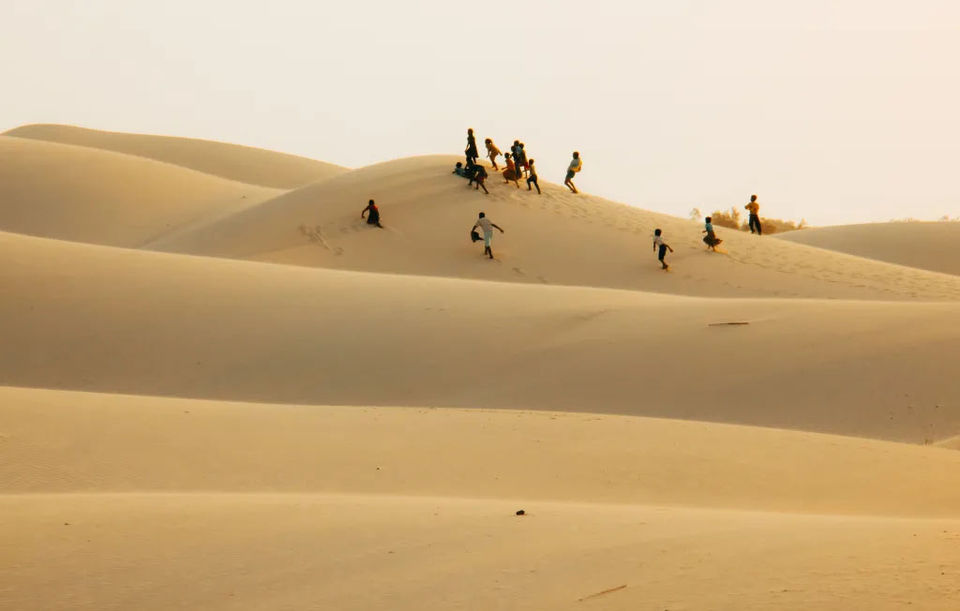
Northeastern Oman's Wahiba Desert is covered in shifting sand dunes.
When to Go
The weather in Oman is typically warm all year long, with daytime highs in the 70s and 80s. However, at night, particularly in the desert and mountains, those highs can fall as low as the low 60s. Avoid May through August because it will be extremely hot.
How to Go
The simplest route is to take an Emirates or Etihad flight out of New York or Washington, D.C. Both airlines fly to Muscat and connect in either Dubai or Abu Dhabi.
What to Pack
The Sultan Qaboos Grand Mosque requires both men and women to have their arms, shoulders, and legs covered. Omanis are generally tolerant of foreigners and our sartorial permissiveness, but dress modestly nonetheless. (However, not all women, including Omani women, are required to cover their heads.) Additionally, bring a thin shawl for shade and occasional sandstorm protection.
To Drink or Not
Although alcohol is illegal in Oman, most upscale hotels do serve it to foreign guests; make sure to inquire before making a reservation. The same is true for portable camps: Hud Hud, for instance, does not possess its own liquor license, but you are still permitted to purchase and transport alcohol at duty-free locations.
Where to Stay
There is no need to linger once you have seen Muscat's Sultan Qaboos Grand Mosque and the charming, if sanitized, Old Quarter with its buildings cleaned up like stage sets and medina selling tourist trinkets. However, while there, make the Chedi Muscat your home base. It has three lap pools and a deluxe breakfast buffet. A new Anantara resort is set to open in the Jabal Akhdar Mountains this fall, but for sheer views, there are few places more spectacular than the small Alila, perched on the edge of a gorge. The hotel's spa is world-class, and it offers thoughtful hikes and day trips.
Before spending one or two nights glamping in the desert with Hud Hud, it's also a nice idyll. There is no electricity, plumbing, or Wi-Fi in the camps; instead, each one has a large tented living area, individual tents with queen-size beds, and a bathroom with a tin can hot-water shower and a drop toilet. You and your group will be the only ones there; the staff will be discreetly hidden.
The Six Senses Zighy Bay (you must fly from Wahiba Sands to Dubai, then take a two-hour private car ride to the resort) is the best place to wash the sand from the desert out of your hair. All of the villas have plunge pools, but if you can, choose one right on the sand since you might have it to yourself. The resort also gives visitors the option of paragliding down to its grounds. It is located at the base of a dramatic stretch between the Hajar Mountains and the bay.
Discover Oman by visiting the country with Mountain Valley Holidays destination experts and find out all the details to make your vacation unforgettable. Check out the best Oman tour packages! For Oman Tourist Visa assistance, call +968-92333677, 24562230, info@mountainvalleyholidays.com


